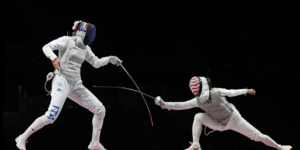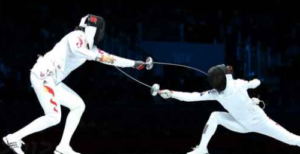
Introduction
Fencing, often perceived as a dance of precision and strategy, is a centuries-old martial art that has evolved into a modern sport of grace and technique. This article explores the intricate world of fencing, shedding light on its history, the art of swordplay, its contemporary competitive aspects, and the enduring allure that continues to captivate enthusiasts around the world.
1. A Historical Glimpse into Fencing
Fencing boasts a rich history that can be traced back to ancient civilizations. The art of swordsmanship and dueling was practiced in Europe during the Renaissance, and fencing schools emerged to teach the art. Over time, fencing transitioned from a life-or-death combat skill to a noble sport. Notably, it became an integral part of the Olympic Games in the late 19th century, cementing its status as a respected sport.
2. The Art of Swordplay
At the heart of fencing lies the art of swordplay, characterized by three distinct weapons: foil, épée, and sabre. Each weapon offers a unique experience, with specific rules and techniques. Foil, a thrusting weapon, emphasizes precise targeting, while épée encourages a more defensive approach, and sabre combines cutting and thrusting techniques. The elegance of footwork and the flick of the wrist are the hallmarks of fencing, blending offense and defense seamlessly.
3. The Duelist’s Attire: Protective Gear
Fencers don distinctive protective gear that plays a pivotal role in ensuring their safety. The ensemble includes a mask, jacket, plastron, and gloves, all designed to withstand the impact of a fencing blade. The mask, with its mesh faceguard, allows fencers to maintain visibility while protecting against potential head injuries. Safety is paramount in this elegant sport.
4. The Thrill of the Bout: Competitive Fencing
Competitive fencing is a riveting spectacle that combines physical prowess with tactical acumen. Bouts unfold on a narrow strip, or “piste,” with fencers vying for points by successfully landing valid hits on their opponent. The rules and target areas vary between foil, épée, and sabre, demanding distinct strategies and approaches. A keen understanding of distance, timing, and psychological warfare are essential for success.
5.Strategy in Fencing
Fencing is often likened to a physical chess match, where mental agility and strategy are as crucial as physical dexterity. Fencers engage in a continuous battle of wits, seeking to outmaneuver and outthink their opponents. The ability to anticipate an opponent’s actions and adapt one’s own strategy in real-time is a hallmark of a skilled fencer.
6. Fencing in the Modern Olympic Games
Fencing, deeply rooted in tradition, has been a steadfast presence in the modern Olympic Games since their inception. It comprises three distinct events: foil, épée, and sabre. Olympic fencing showcases the sport’s rich history while emphasizing the athleticism and precision that make it a captivating spectator sport.

7. The Fencing Community: A Global Brotherhood
Fencing transcends geographical boundaries, forming a close-knit global community of practitioners and enthusiasts. Fencers from diverse backgrounds and cultures come together to share their passion for the sport. Fencing clubs, competitions, and international events foster camaraderie and sportsmanship among fencers worldwide.
8. The Educational Benefits of Fencing
Beyond its competitive aspects, fencing offers a range of educational benefits. It promotes discipline, concentration, and self-control. Fencers learn to set goals, persevere through challenges, and exhibit grace under pressure. Many fencers find that these life skills acquired on the fencing piste extend into other areas of their lives.
9. The Future of Fencing: A Dynamic Evolution
As fencing continues to evolve, it adapts to the demands of the modern world. Technological advancements have introduced electronic scoring systems that enhance accuracy and fairness in competitions. Moreover, efforts to make the sport more inclusive have led to initiatives that encourage greater participation among women and para-fencers, ensuring fencing’s relevance in the 21st century.
Also Read:
Conclusion
In conclusion, fencing stands as a unique blend of history, artistry, and athleticism. It is a sport where the mind and body harmonize in a graceful dance of strategy and skill. As fencing’s allure continues to enchant participants and spectators alike, it remains a timeless testament to the enduring fascination with the noble art of the sword. Whether you are a seasoned fencer or simply an admirer of the sport, the world of fencing welcomes all to experience its elegance and depth.




